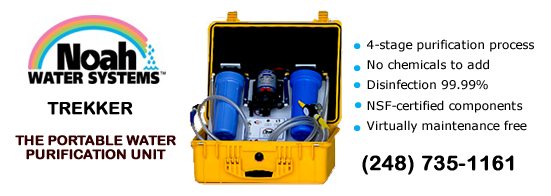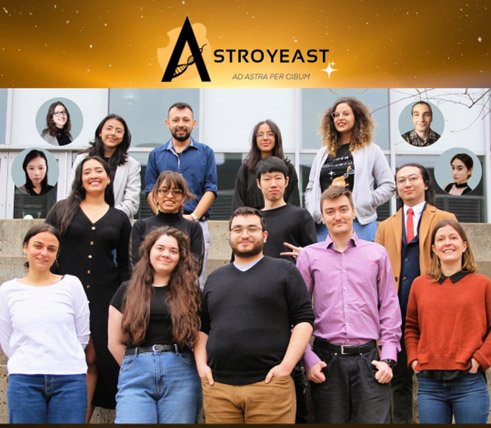Features
Update 2023/2/10
Space Food
brought to you in part by

AstroYeast
Concordia University’s interdisciplinary team bioengineers yeast to create
nutrient-rich delicious space food
By Suzanne Forcese
A student team in Concordia's SynBioApps program has earned $30,000 and been named among the Canadian semi-finalists in the Deep Space Food Challenge.
WaterToday interviewed Gabriel Aguiar-Tawil, genetics team lead.
WT: Congratulations on advancing to the semi-finalist list for the Deep Space Food Challenge! What was in the Challenge that inspired you and sparked you to know "we've got this!”?
Gabriel: When the Challenge was announced, we were starting the second year of our two-year project for the International Genetically Engineered Machines Competition (iGEM). This project was focused on adapting baker’s yeast for long space journeys in order to later use the yeast as a mini factory for food or to make medicine.
When applying, we were excited that our project was a natural fit for such an amazing opportunity. We knew we had a great shot solely based on the proportion of space nerds in our team and because we already had developed a solid foundation in space biology and engineering.
WT: Your team is very diversified, with students from Concordia’s SynBioApps Program, the Faculty of Engineering and Computer Science, and the Faculty of Arts and Science. How did you assemble your team members? What does each bring to the Challenge?

Gabriel Aguiar-Tawil (front center) one of the lead researchers in the Concordia University DSFC Team
Gabriel: Our team was assembled based on interest in the project, which leads to its diversity. While most of our team is made up of biologists, biochemists, and engineers, other roles such as social media, design, and outreach which do not need the same level of specialization are still important to the mission. Overall, our team is structured in a way that allows anyone to contribute what they can, which is one of our strengths.
WT: There’s a lot to unpack in the term “Synthetic Biology”. Please explain to our viewers more about this emerging science and how it is important for planet Earth as well as Space exploration.
Gabrel: Synthetic biology can be boiled down to using biology as a platform for the creation of new solutions to important problems. For example, extracting crude oil and refining it to create a certain plastic molecule is very harmful to the environment and expensive. However, people are modifying certain bacteria so that they can produce the same molecule directly from sugar.
Our approach is similar. We are taking baker’s yeast, a microorganism that is commonly used in baking and brewing applications but also eaten in forms such as nutritional yeast or marmite.
We are modifying the yeast to become mini-factories which produce different nutrient and flavour molecules.
The impact of the field of synthetic biology will not only come from novel technologies such as biofuel-producing organisms, or vitamin-producing yeast but also in replacing non-sustainable manufacturing processes and chemical inputs with biological ones.
WT: The Team is creating a yeast-based platform that functions under microgravity conditions. What is AstroYeast? What can it be used for?
Gabriel: Our food technology is centred around a yeast strain that is specially adapted to the space environment, named AstroYeast. The yeast acts as a chassis to produce the nutrients crew members will need for their long voyage to our celestial neighbours. The dining experience is enhanced with the addition of flavour molecules.
The production of these nutrients and flavour molecules is performed in an automated and optimized bioreactor system.
The end product is a delicious and nutritious yeast spread which can be safely consumed.
WT: What is AstroBio? What have you achieved so far?
Gabriel: AstroBio was a database that we created for the 2020 iGEM competition to facilitate finding and comparing data about how different organisms change on a genetic level when in microgravity conditions. It also features incorporated tools to help analyze the data. This database won the Best Software Award at the 2020 iGEM competition.
WT: How are you creating microgravity-tolerant yeast?
Gabriel: At this point, we are more focused on ways to produce different nutrient and flavour molecules in yeast. Once we achieve that part of the platform, we will be using evolution to make yeast more tolerant to microgravity conditions.
Part of our work for the 2021 iGEM competition was modifying yeast so that it glows when exposed to environmental stress. As it is known that microgravity conditions stress the yeast cells, we will observe glowing cells.
The intensity of the glow will reduce as our evolutionary experiments are successful in creating micro-gravity-tolerant yeast. When the glow is minimal or eliminated, we will be able to say that we have a more tolerant strain.
To evolve the yeast cells, we constructed a microgravity simulator for the yeast, allowing them to experience microgravity conditions here on Earth.
WT: Your Team’s entry in the Challenge is listed as “AstroYeast Microfarm: Space-Adapted Nutrient Farm Factory”. Please explain the technology of the “farm” and how it would be applied to a space station.
Gabriel: The Microfarm is a novel bioreactor developed to grow our yeast in microgravity conditions. The Microfarm was developed with sustainability and automation as priorities.
Our production cycle begins with adding a little bit of yeast to a nutrient-filled broth, from which more yeast grows, like seeds on a farm. This also allows users to restock the seed yeast.
When it comes to the space station, we designed the Microfarm to counteract some of the effects that microgravity has with respect to fluid and gas physics, making it so that we can still grow the yeast in a liquid.
It is also highly automated including the growth, cleaning and sterilization cycles, as we know that an astronaut's time is highly valuable.
WT: What’s next for the Challenge?
Gabriel: We will be conducting proof of concept experiments to show that our AstroYeast is operating as designed. We will also be working on improvements for the Microfarm, such as improving yields and optimizing automation, food safety, and sustainability of the system.
WT: How has the Challenge impacted you?
Gabriel: We have met many brilliant people along the way who have supported and encouraged us. The CSA has also been incredible at offering training and connecting us within their network when needed. We are very grateful for all the support that has encouraged us thus far and we recommend others take the chance and create their own projects! A truly invaluable experience for young minds.
WT: Please leave a message for our viewers that highlights the importance of the work/research you are engaged in – not only for space exploration but also for life here on Earth.
Gabriel: Addressing food sovereignty in a myriad of ways is necessary for a sustainable and delicious future in food. We believe that AstroYeast has an essential role in providing a unique and nutritious food source when traditional food production methods (aquaponic agriculture for example), cannot fill the needs of the community.
The AstroYeast Microfarm has the potential to produce the necessary nutrients to assure astronauts and people in isolated communities here on Earth access to a reliable, autonomous, and sustainable source of nutrition.
|